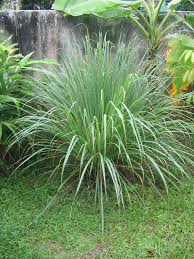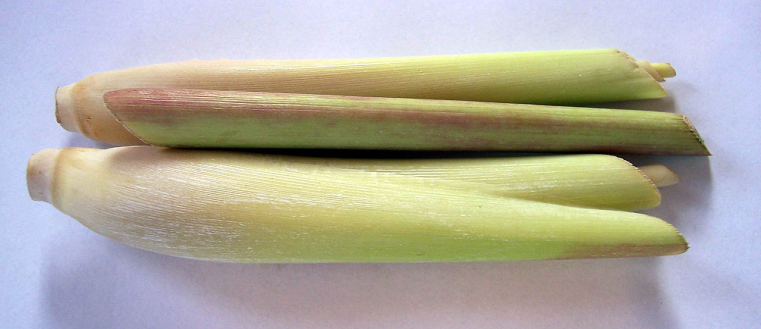Lemongrass
 Common Name: Lemongrass, barbed wire grass, silky heads, Cochin grass or Malabar grass
Common Name: Lemongrass, barbed wire grass, silky heads, Cochin grass or Malabar grass
Scientific Name: Cymbopogon citratus
Climate: Hot and temperate
Plant Description: Lemongrass grows in dense clumps with stiff stems and has long light green leaves that droop at the ends. It can grow up to two meters tall. Leaves are usually aromatic and smell like lemon when crushed.
Cultivation: Place stems in a fresh pot with water in a sunny place until they grow roots. Water needs to be changed regularly in this stage. Once roots are grown, cut the tip of the stems and plant in a mixture of soil and compost. Another option to multiply the grass lemon is the division of the root clumps. Simply cut the plant in half. Plant one meter apart from each other to provide enough room for growth. You can harvest the leaves once they have grown about 30cm high.
Lemongrass grows best when planted in direct sun, but can grow half shade. Irrigation should be moderate. Frequent and abundant watering should be avoided as it may affect the roots. It prefers soils with a lot of organic material and good drainage. At the time of planting it is advisable to add fertilizer.
 Uses: Lemongrass is an aromatic plant that has rich essential oils. A refreshing tea can be made from the leaf and the stem. It is also used for perfumes and aromatherapy, and is said to have antiseptic, antibacterial, antifungal, diuretic, antispasmodic, digestive and tonic properties.
Uses: Lemongrass is an aromatic plant that has rich essential oils. A refreshing tea can be made from the leaf and the stem. It is also used for perfumes and aromatherapy, and is said to have antiseptic, antibacterial, antifungal, diuretic, antispasmodic, digestive and tonic properties.
Lemon avocado tea makes people sweat, therefore it can provide relief from fevers. It also helps to cure colds, fever, cough, stomach aches, headache. It also calms the nerves and has detoxifying, antioxidant and relaxing properties. It is mainly used to lower blood pressure, relieve muscle aches, migraines, inflammations, influenza, fungal infections, cholesterol, diarrhea, vomiting and gastritis.
To make a lemon grass oil, chop the stem, grind it and add oil, heat it for an hour, let it cool and strain. This oil is also applied to bumps and bruises, to relieve rheumatic pain such as arthritis and muscle ache, for low back pain and cervical tension.
It can also be used to repel mosquitoes and aphids in the garden and protect against erosion.
Pests and Diseases: Lemongrass can suffer from fungal rust which causes yellow and brown spots. This can be controlled by using mulches and compost to stimulate growth, and by pruning affected parts of the plant.1
References:
En español: Zacate de Limón
